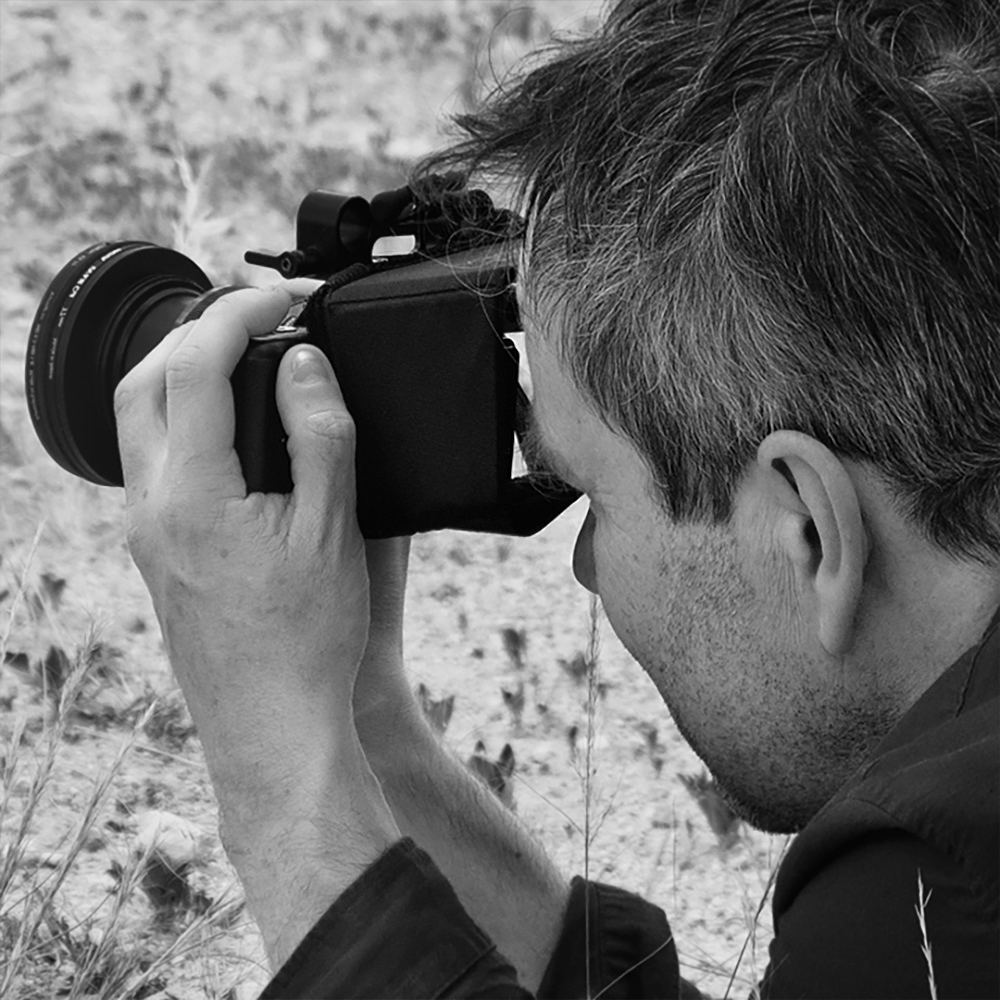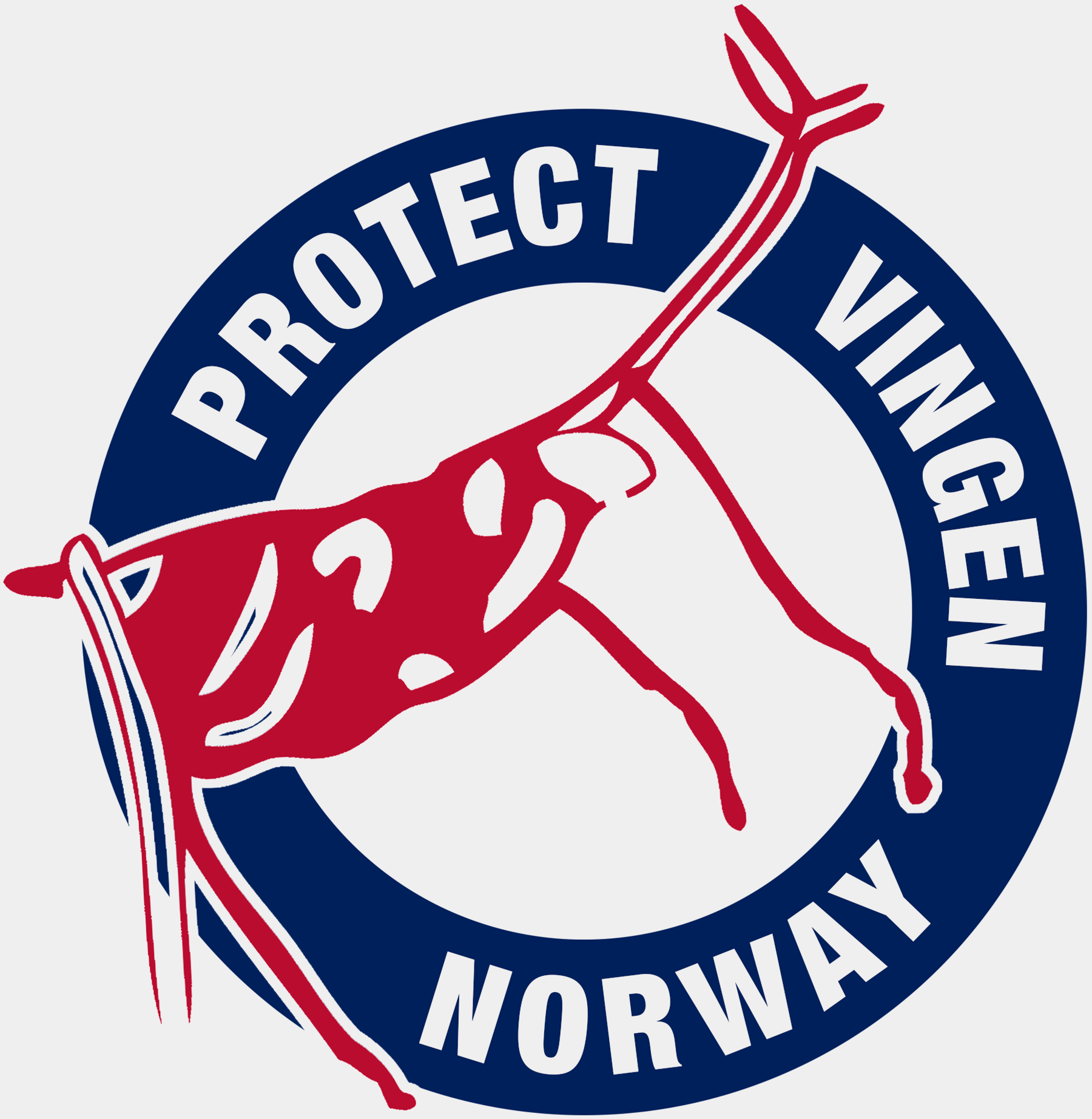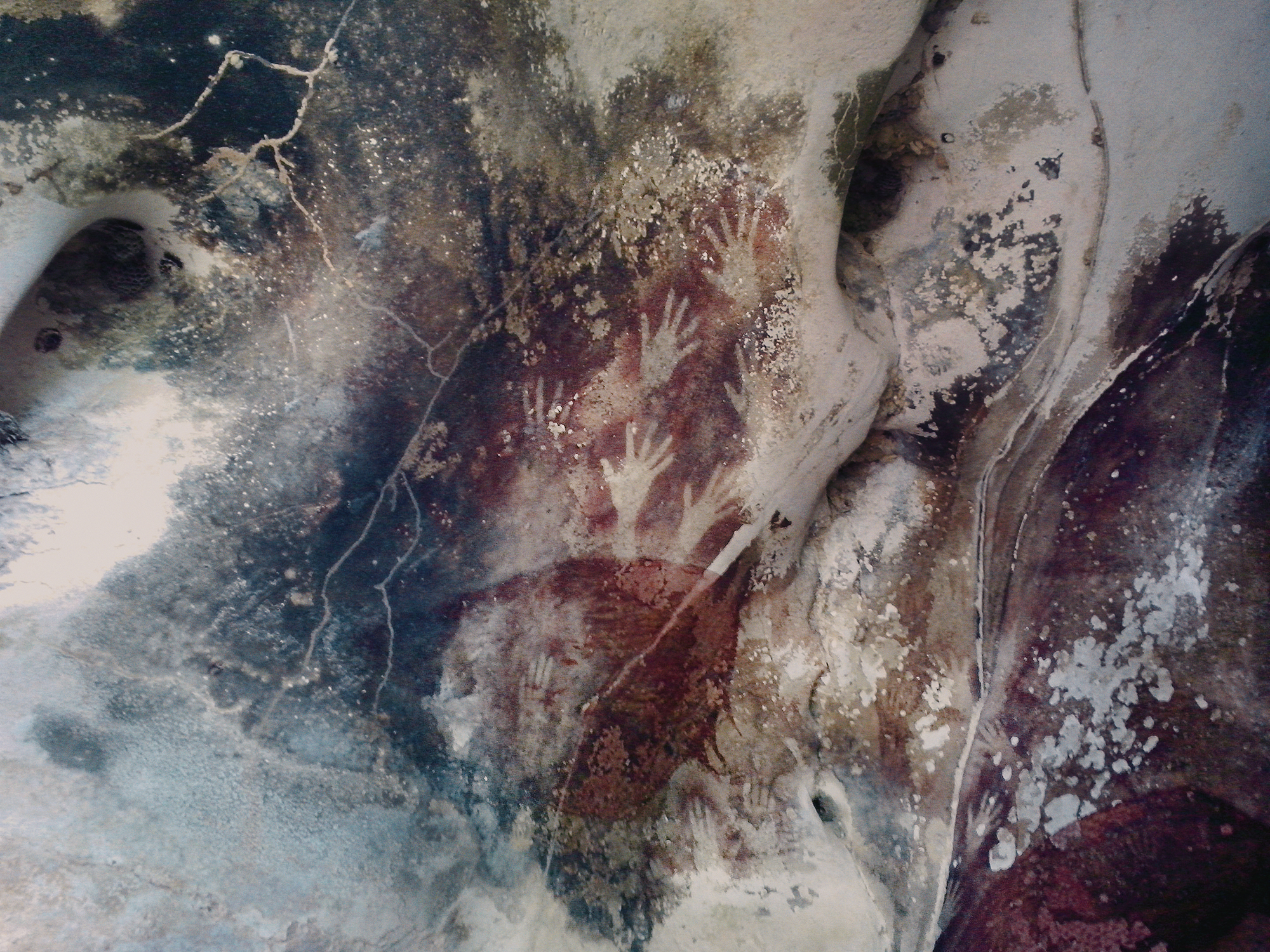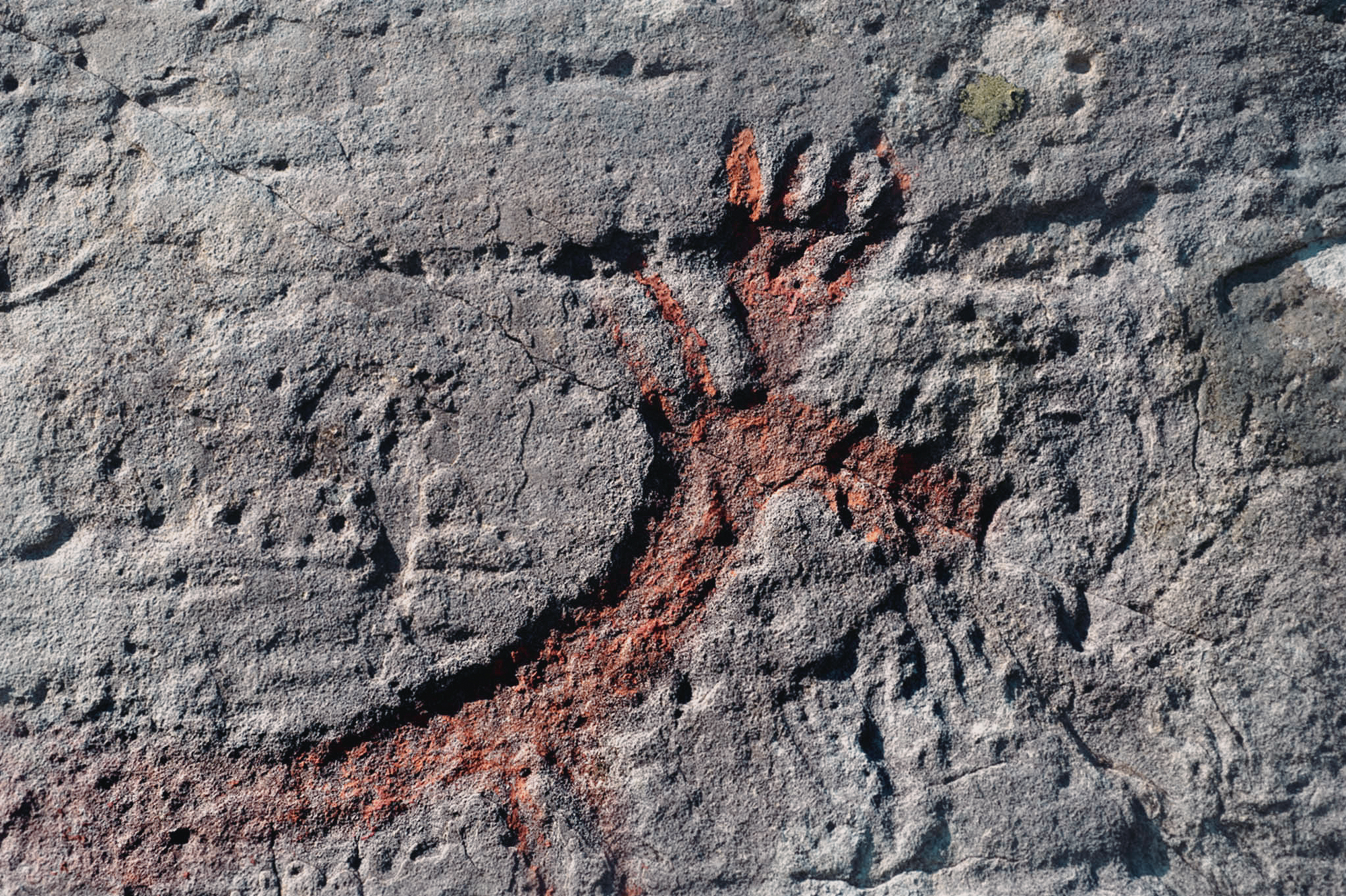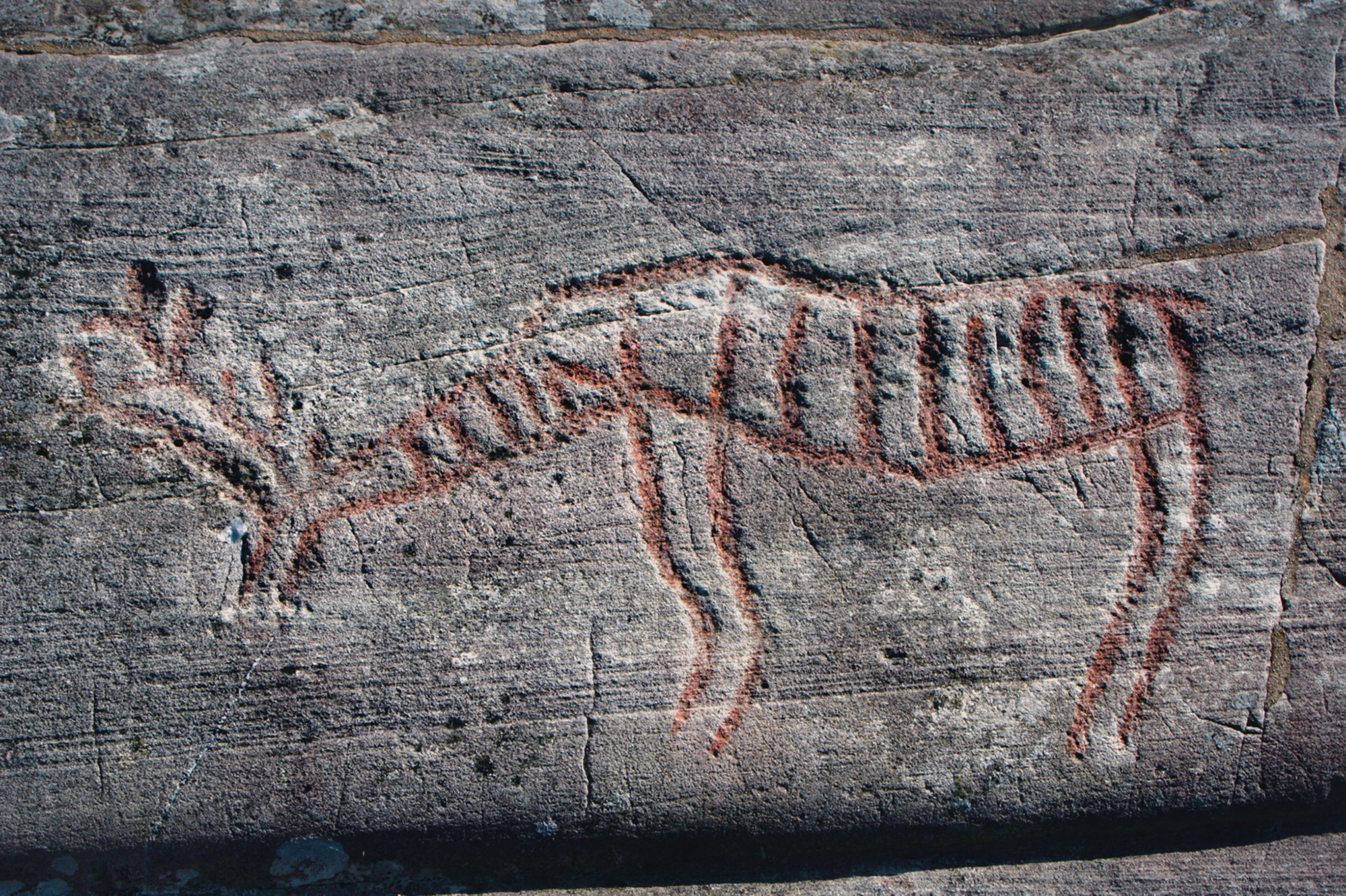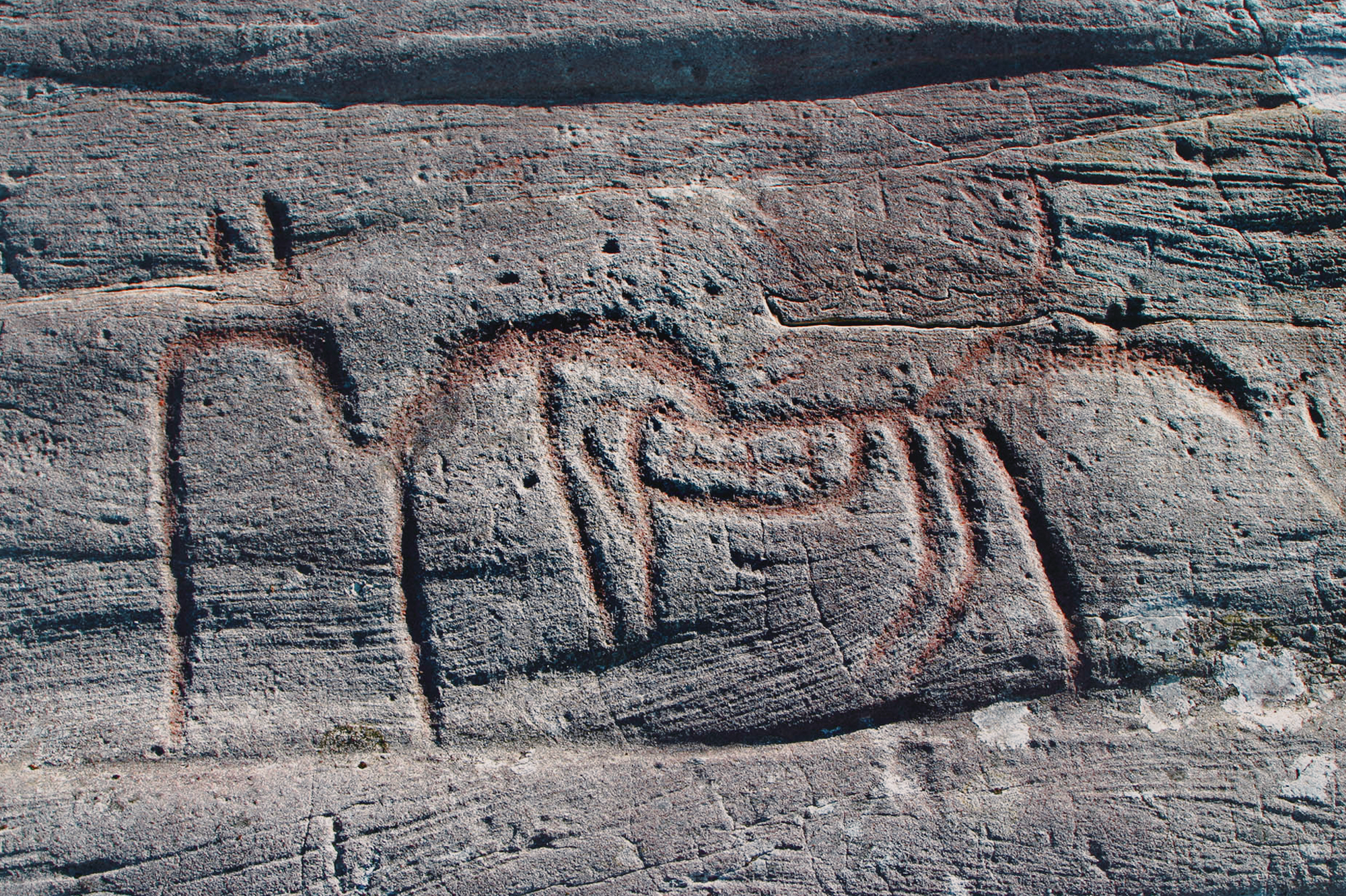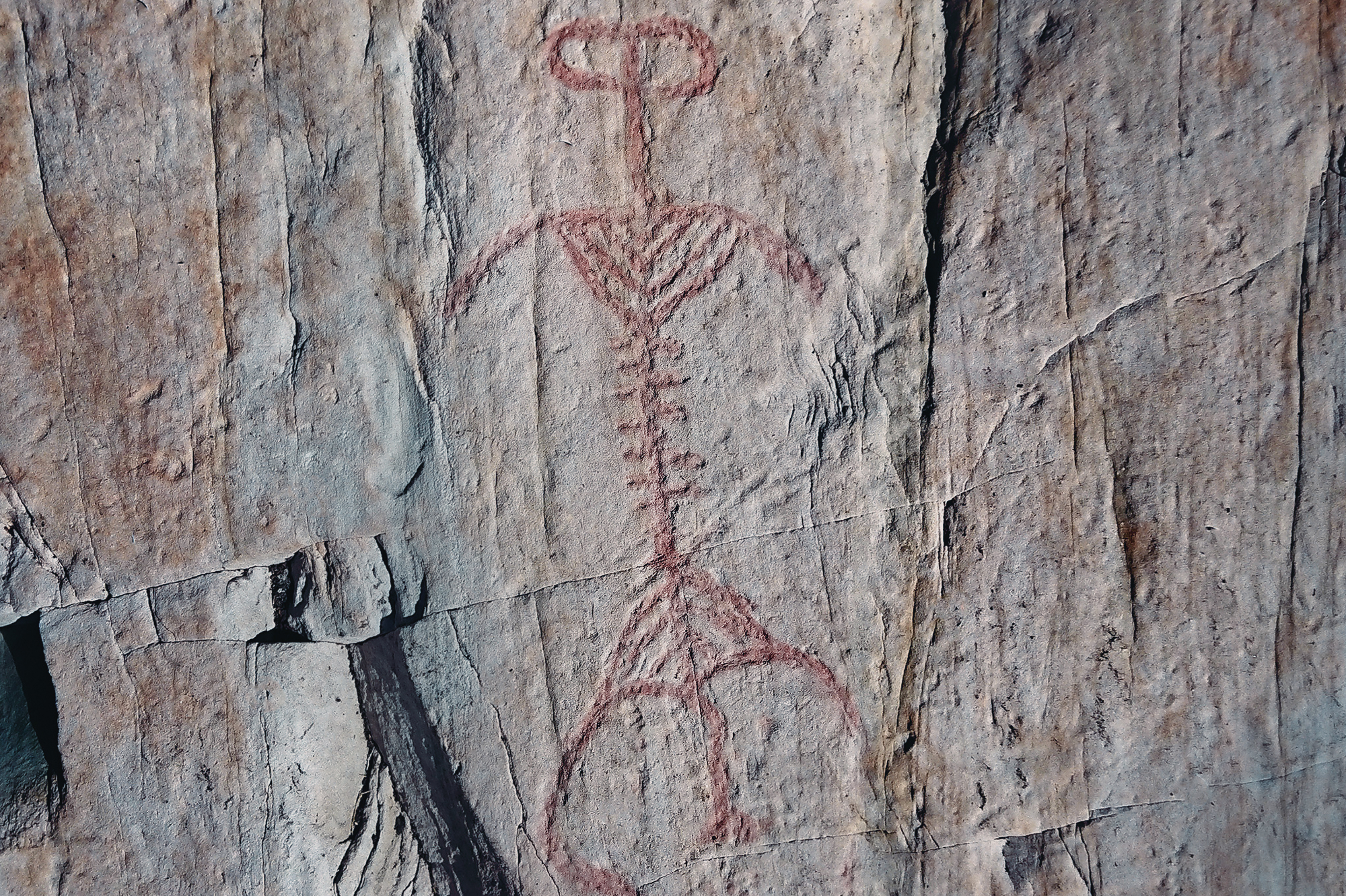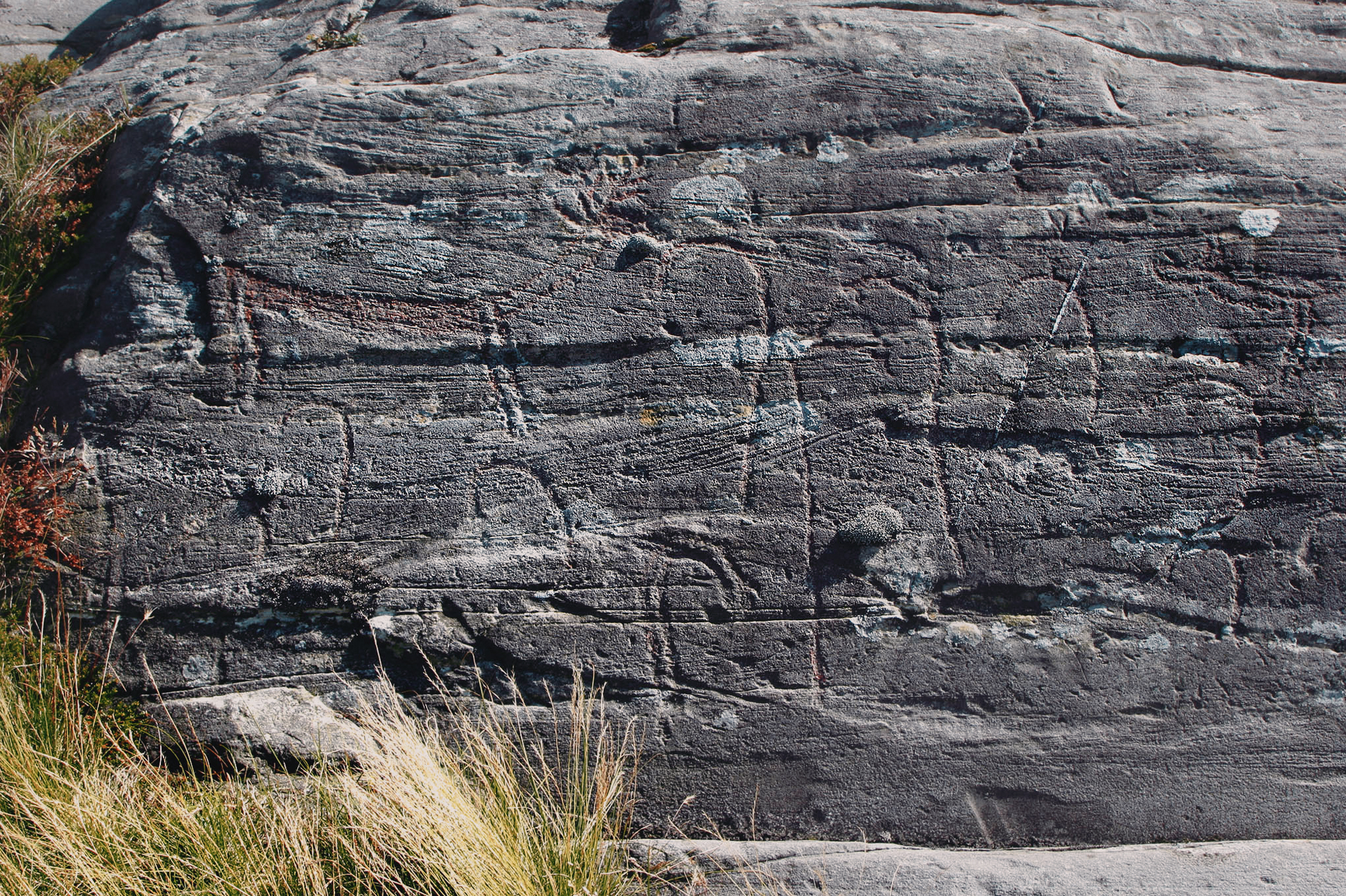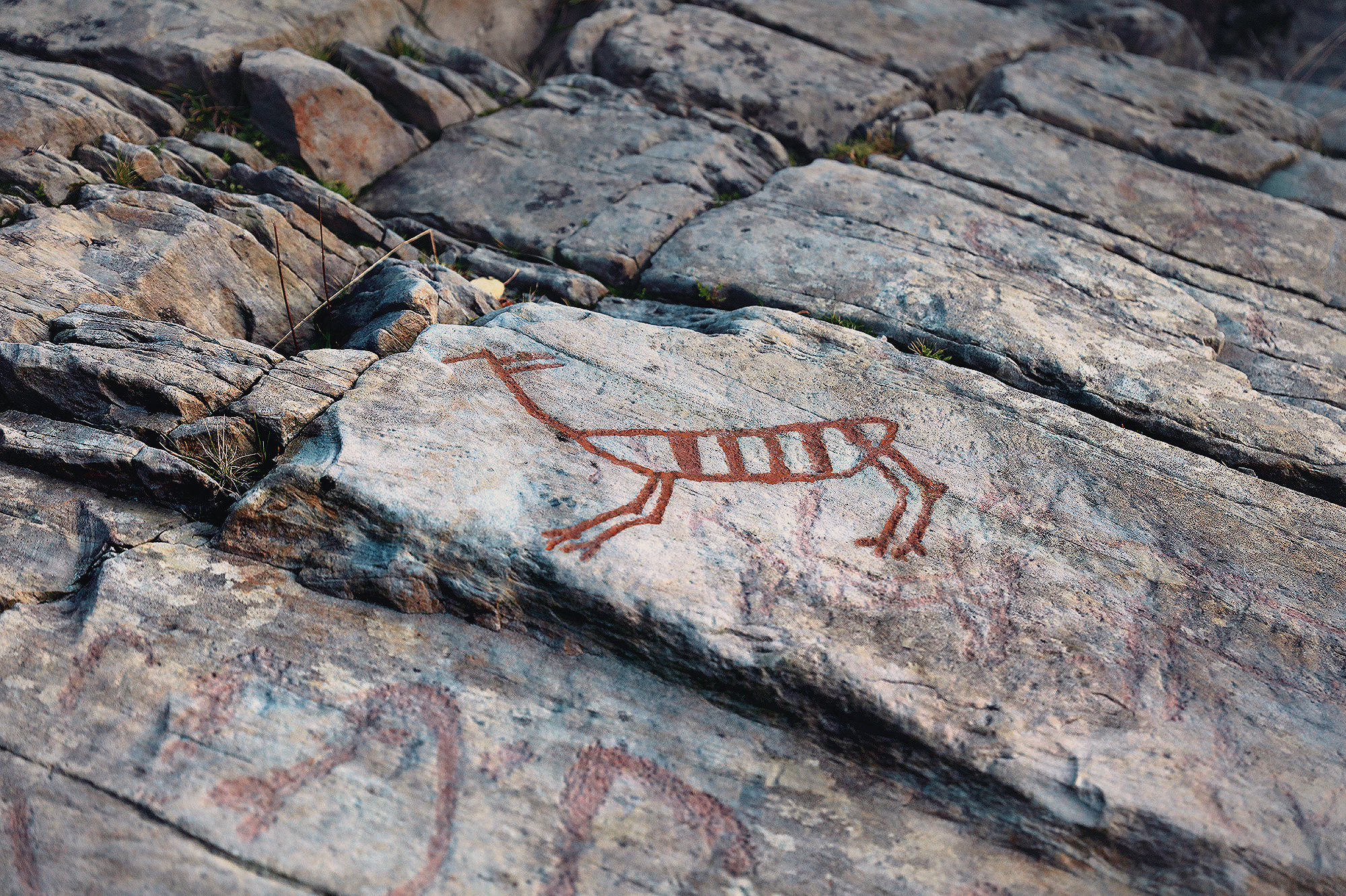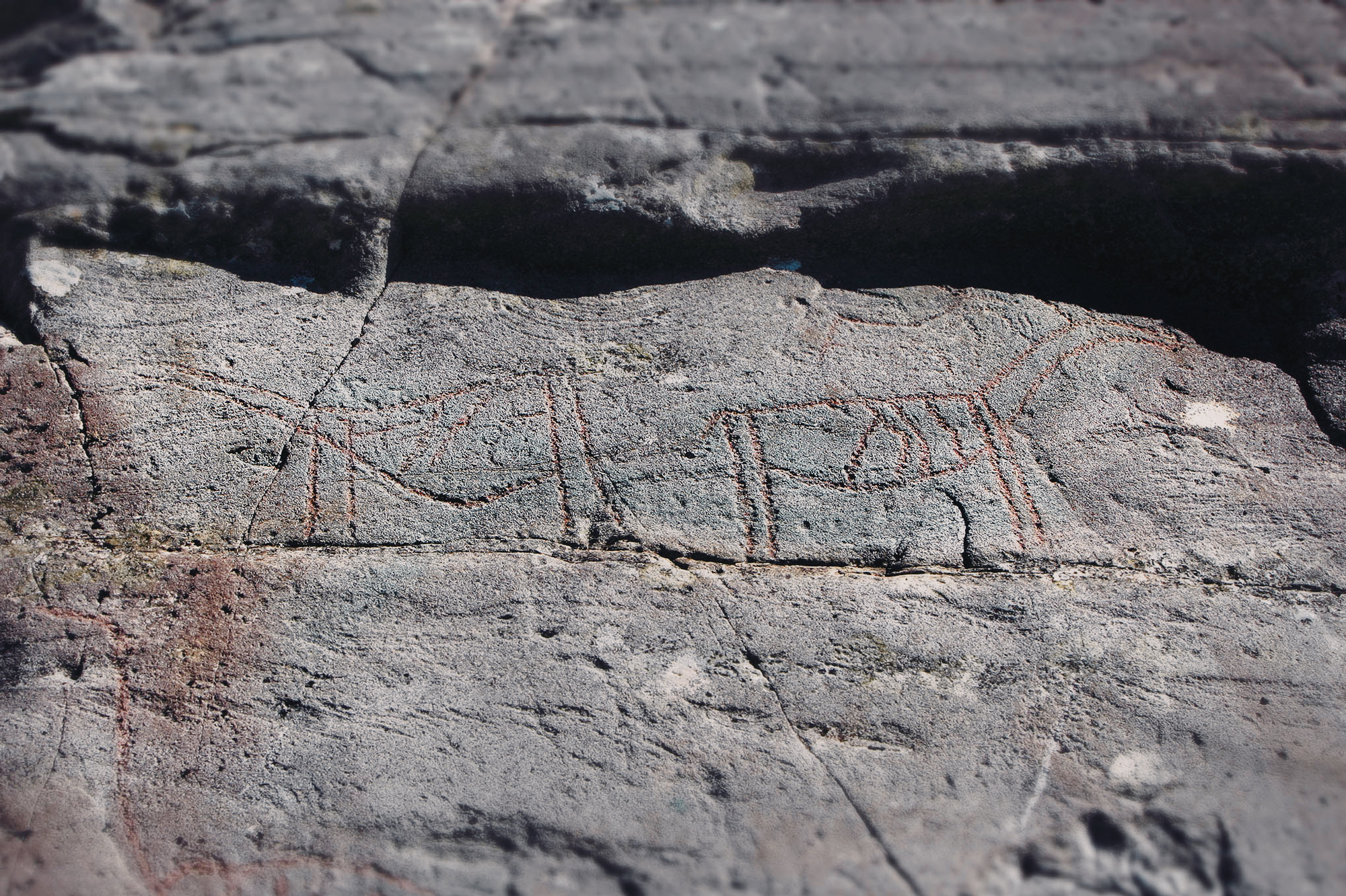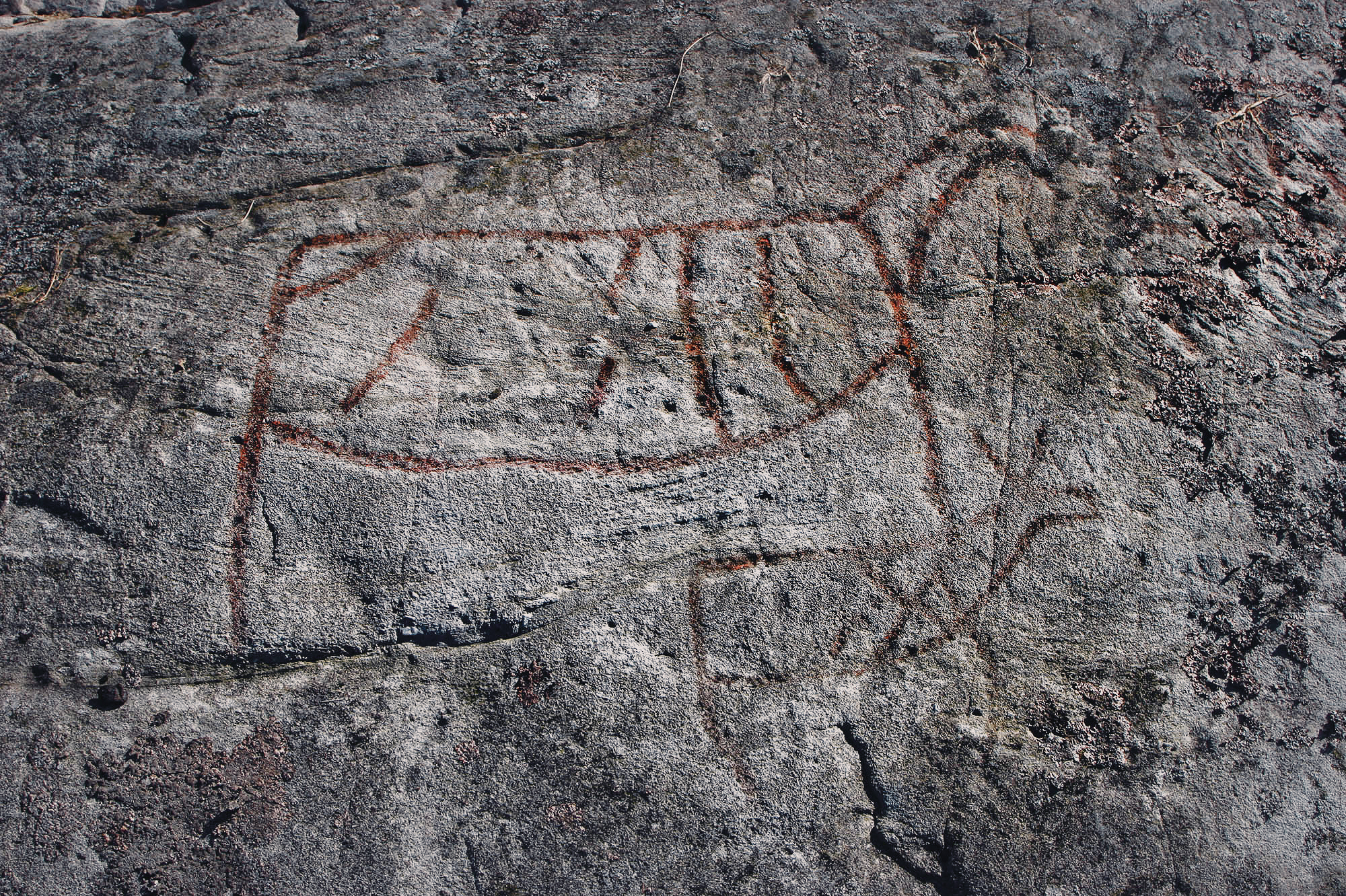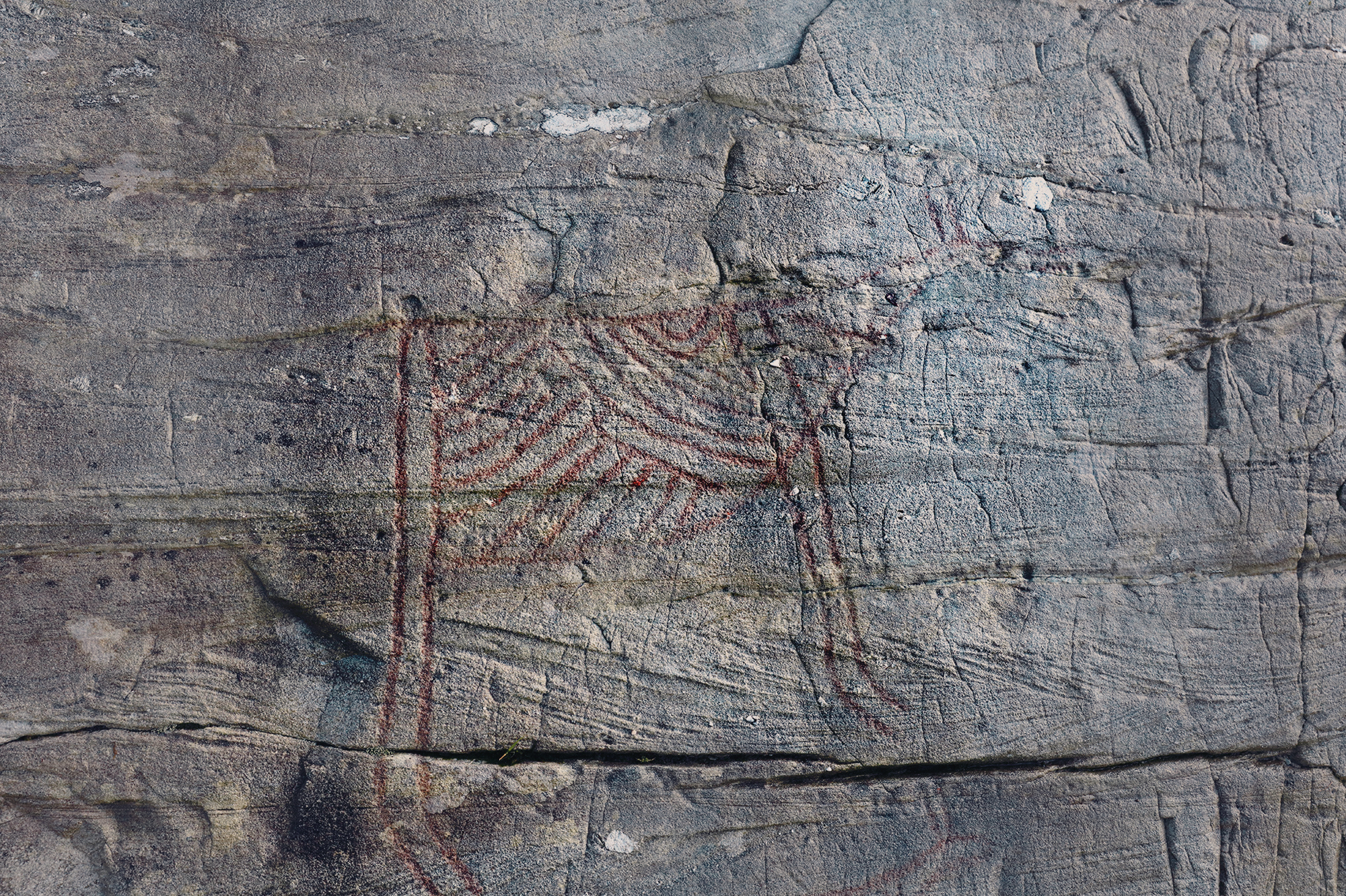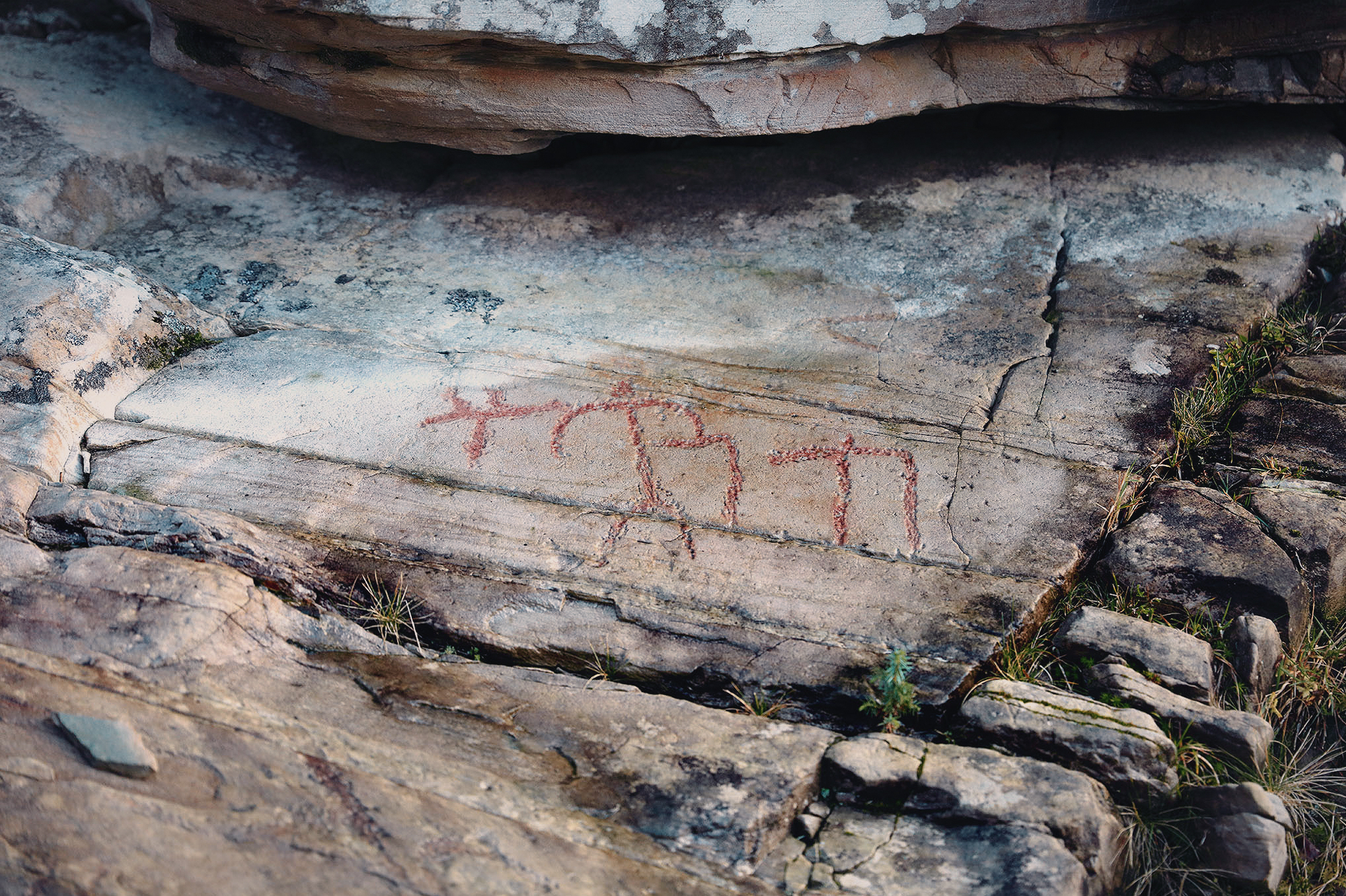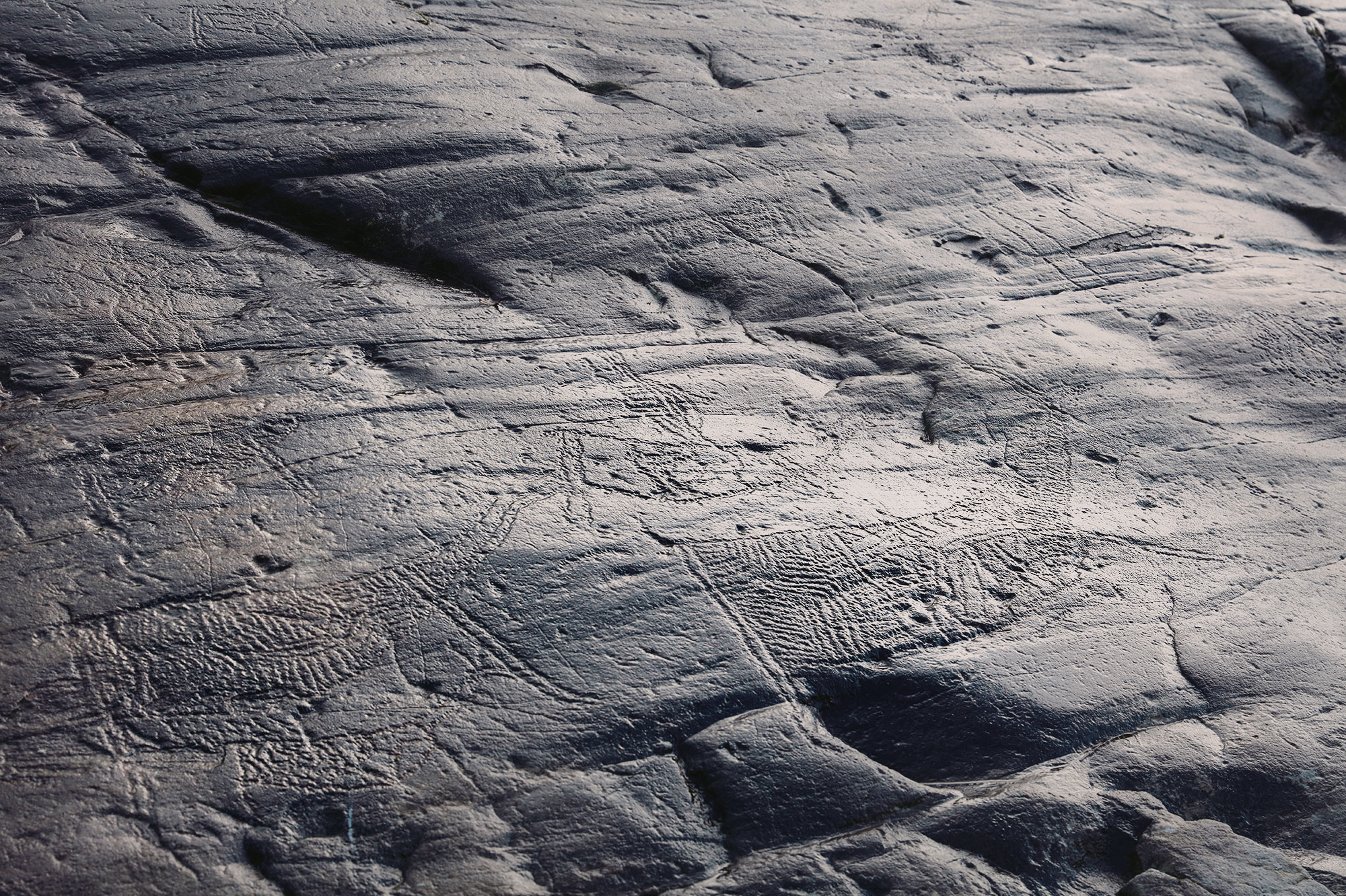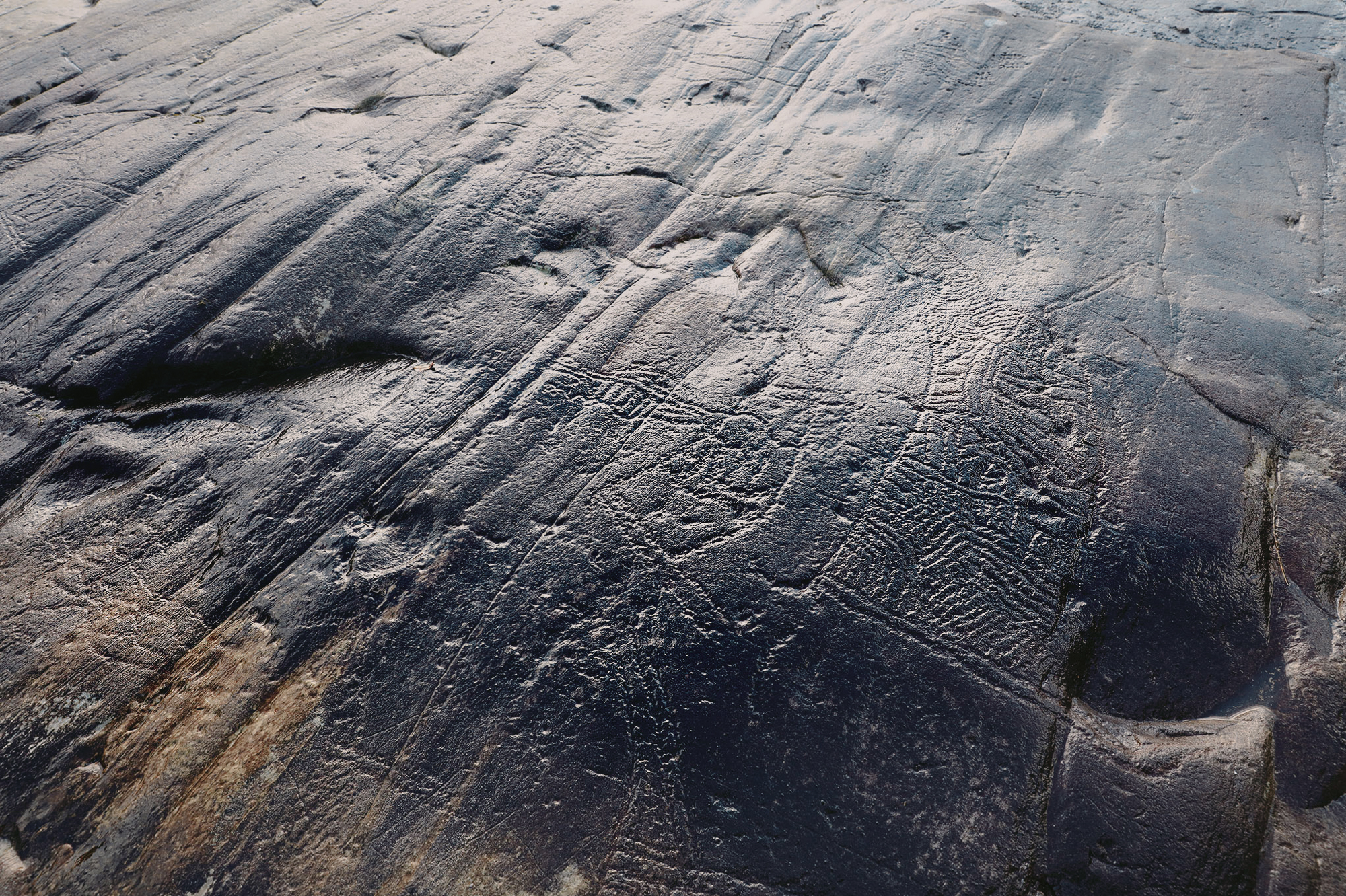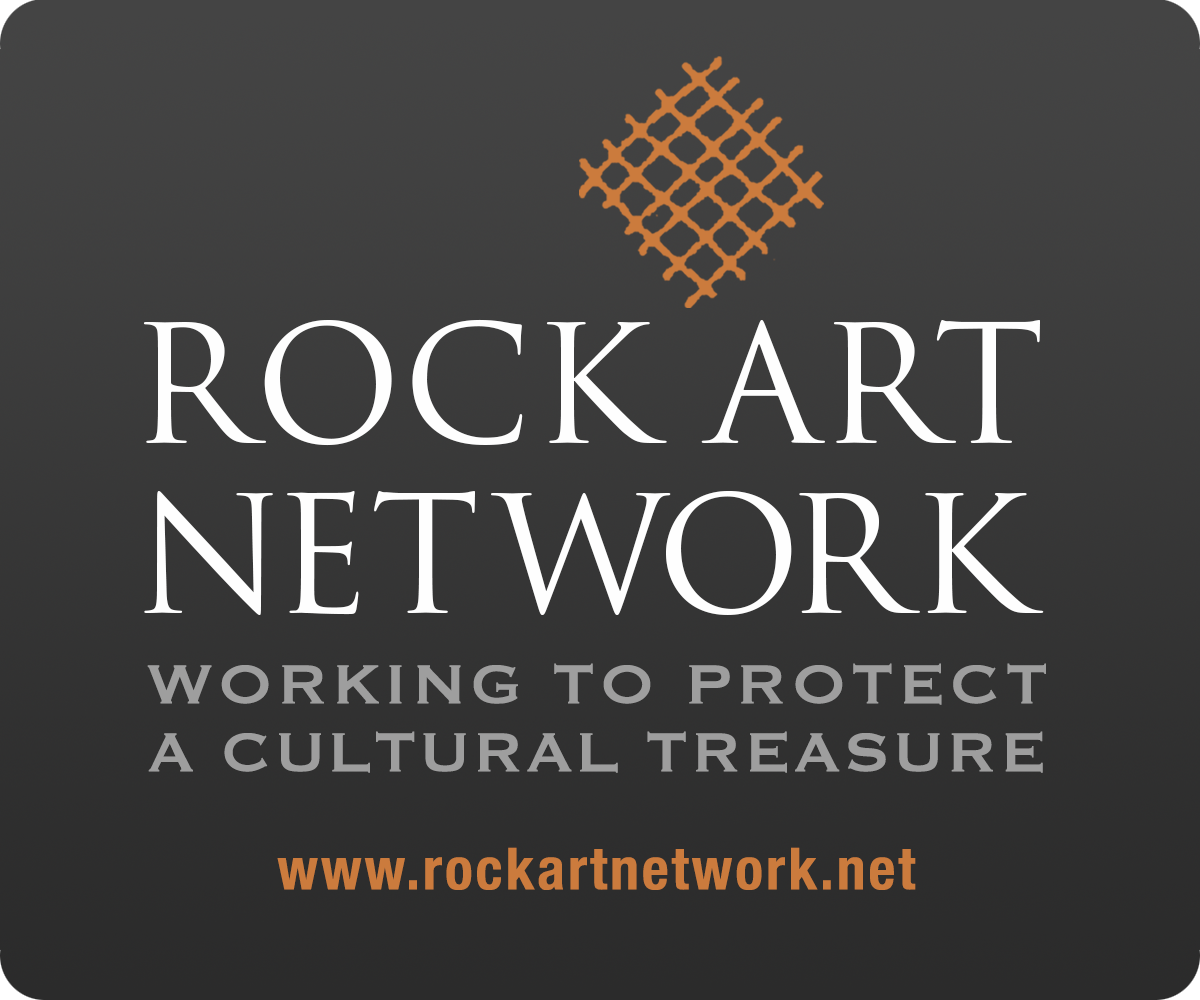
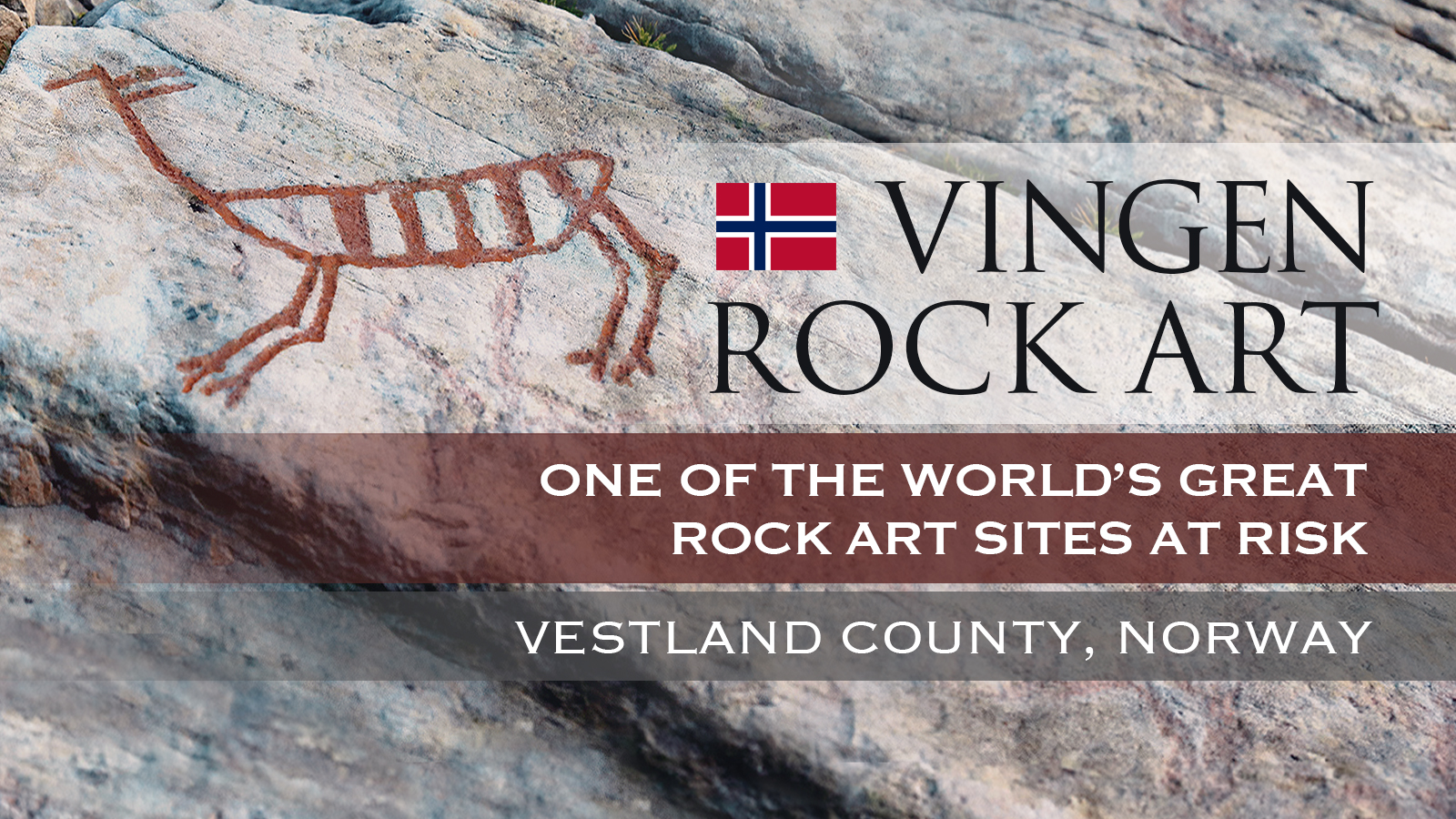
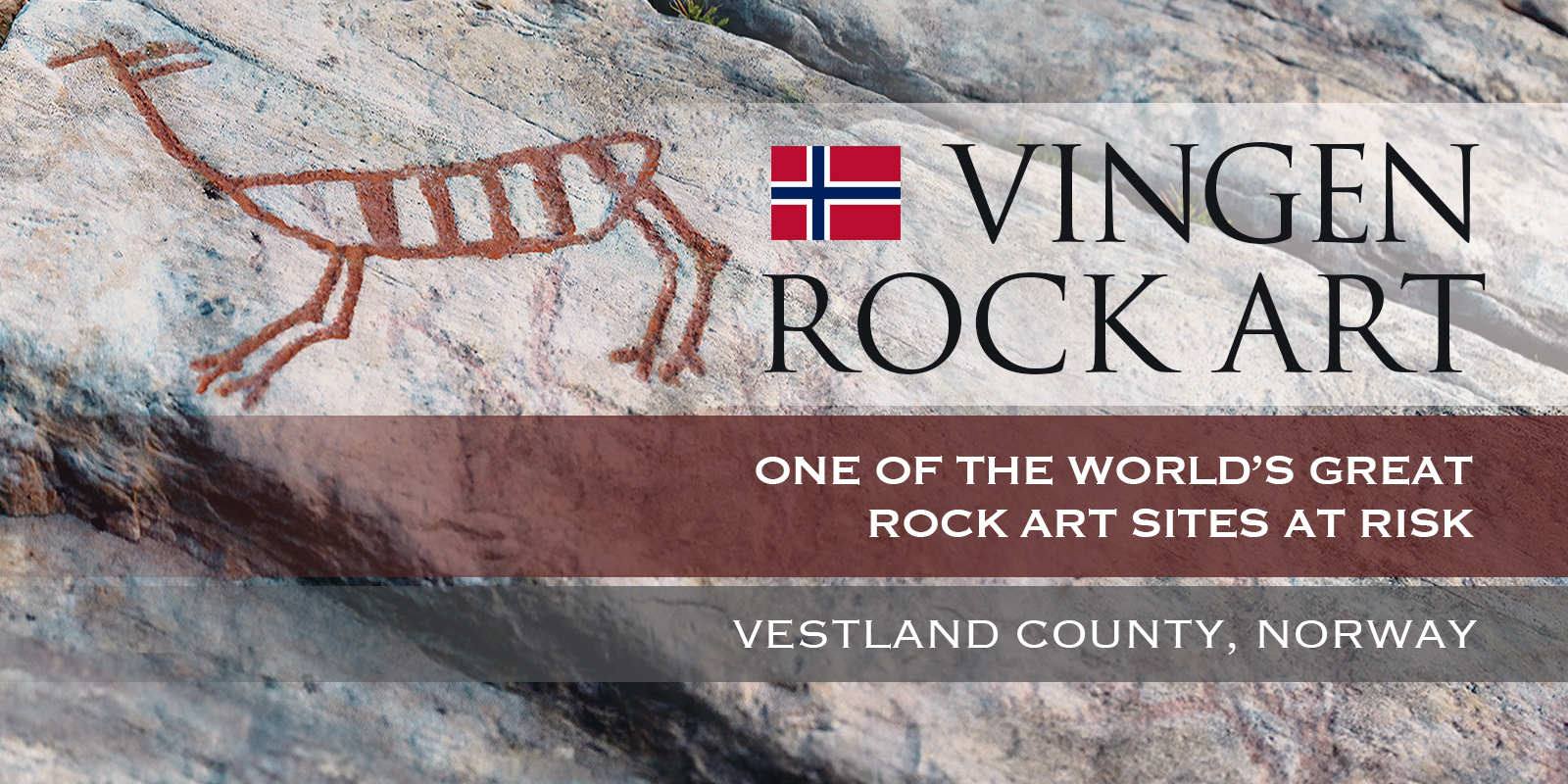
Rather ominously Trond Lødøen, Associate Professor at the Department of Cultural History at the University of Bergen remarked in his 2015 document 'The Vingen site: a century of rock art research and a recent cultural heritage initiative for the UNESCO World Heritage Tentative List' that ... 'we see new threats from both the rock quarrying industry, windmill plants, and more modern infrastructure which is supported by other Norwegian governmental departments. National legislation may therefore not be powerful enough to keep industry at a suitable distance in the future, meaning that an international focus may be needed. It therefore seems necessary to focus the world’s attention on the quality of the sources and both the natural and cultural preservation of the elements in the area, something which may be more effectively secured with the help of the UNESCO'.
It is disappointing to see an all too familiar fate for rock art and that Trond's fears have become reality. The February 5th 2024 decision by the Norwegian Ministry of Local Government and Districts to approve a new quarry on top of the mountain peak Aksla now puts Vingen rock art in very real danger. Myself and other colleagues from the field of rock art around the world have grave fears for the fate on this regions cultural heritage.
Rock art is intimately linked to the landscape in which it resides, it is fragile and irreplaceable and its location is a part of its story. One of the remarkable and precious aspects of Vingen's rock art is that very landscape, a landscape that has barely changed over the last 6-7 millennia. According to a report published in Norwegian Broadcasting Corporation (NRK) Erling Sande is quoted as saying this is an acceptable intervention.
The University of Bergen, which owns and manages the Vingen field, does not agree with this. 'This new quarry is closer to the Vingen field than the existing quarry. In addition, there will be a new shipping area that is closer, which will bring with it a lot of dust, noise and ship traffic', says Trond Lødøen, professor at UiB.
Often decisions revolving around areas that are home to precious rock art, the wider region should be given important consideration. The Norwegian authorities surely can not be unaware of this given the Norwegian Oil Fund initiative. Through this initiative Norway has taken action in recent years to preserve the 40,000-year-old rock art in Indonesia. The Council on Ethics issued a recommendation on 19 December 2022 that the Indonesian mining company Semen Tonasa be put on a three-year watch list due to the risk of damaging prehistoric cultural heritage. The Council on Ethics recommendation states 'The Council on Ethics considers that the company must take particular responsibility for ensuring that Semen Tonasa’s activities do not contribute to the destruction of the rock art, given the outstanding global significance of the cultural heritage it represents. This responsibility also extends to the protection of cultural heritage as yet undiscovered.'
To me this feels like a level of hypocrisy, on the one hand Norwegian authorities are to be commended for acting responsibly in relation to the rock art in Indonesia. However does this same responsibility not apply to a region for which they themselves are custodians for? It is a mixed message.

Whoever you are, Government official, company, citizen you are first and foremost a custodian with a responsibility to cultural heritage in perpetuity for the benefit of all humanity and the generations that follow.
My thoughts in this letter on Vingen began with Trond Lødøen's ominous concerns for threats facing the rock art. But his document also contained hope, hope that Vingen might one day join Alta on the World Heritage List. The world would see Norway with two sites on the UNESCO list, and there is little doubt that the international rock art community would support its inclusion. Sadly the February 5th 2024 decision seems to have taken Vingen on a different path. I would hope that wise heads prevail and this whole development is re-evaluated and another option is found, as the course of action being taken is not the correct one, especially concerning an area that is one of the greatest rock art sites, not just in Norway but the world.
Ben Dickins
Director of Art & Design
Bradshaw Foundation
It is important to lodge your opposition to this development, raise awareness, disseminate knowledge about the threat to cultural heritage and the environment, and encourage collective efforts to halt the quarry project.
Please consider signing the petition to halt this develpment, which can be found here:
Click here for the signature campaign
Rock art sites do not sit in isolation. Rather, they are integral parts of landscapes with both cultural and natural values. Vingen’s surrounding natural landscape is also very important as it is integral to Vingen’s context and one of the reasons ancient peoples marked the area with rock art thousands of years ago. Vingen is of World Heritage value and one of the largest and best ancient petroglyph sites in Europe. The rock art imagery of Vingen is diverse, numerous and unique and the site is one of the jewels in the crown of Norway’s rock art heritage.
→ Vingen Rock Art In Norway - Index
→ Film: Vingen Rock Art in Norway
→ Paul Taçon - Griffith University letter
→ Norway's Vingen Rock Art Petroglyphs at Risk
→ ICOMOS Statement on Vingen
→ Knowing when to back down: The plight of the Vingen rock art site, western Norway
→ Norway preserves world heritage abroad but not in Norway?
→ Vingen - A Century of Rock Art Research & Cultural Heritage
→ History of Vingen Rock Art in Norway
→ Valuing Cultural Heritage
→ Norway's Confusing Messages
→ Members and affiliated institutions of the Rock Art Network
→ Film: Vingen Rock Art in Norway
by Bradshaw Foundation
20/02/2024 Vingen Recent Articles
NORWAY
→ Knowing when to back down: The plight of the Vingen rock art site, western Norway
by George Nash
4/03/2024
→ Norway preserves world heritage abroad but not in Norway?
by Bradshaw Foundation
20/02/2024
→ Valuing Cultural Heritage
by Ben Dickiins
20/02/2024
→ Norway's Confusing Messages
by Peter Robinson
20/02/2024
→ Paul Taçon - Griffith University letter regarding the Aksla quarry and Inste Bårdvikneset quay developments in Norway
by Paul Taçon
13/02/2024
→ Norway's Vingen Rock Art Petroglyphs at Risk
by Rock Art Network
13/02/2024
→ Professor Benjamin Smith President, ICOMOS International Scientific Committee on Rock Art calls for an immediate review of the decision to allow a rock quarry and a shipping quay to be built at one of the most significant rock art sites in Europe: Vingen.
by Rock Art Network
8/02/2024
→ Vingen - A Century of Rock Art Research & Cultural Heritage
by Trond Lødøen / Ben Dickins
6/02/2024
→ History of Vingen Rock Art in Norway
by Trond Lødøen
1/01/2018

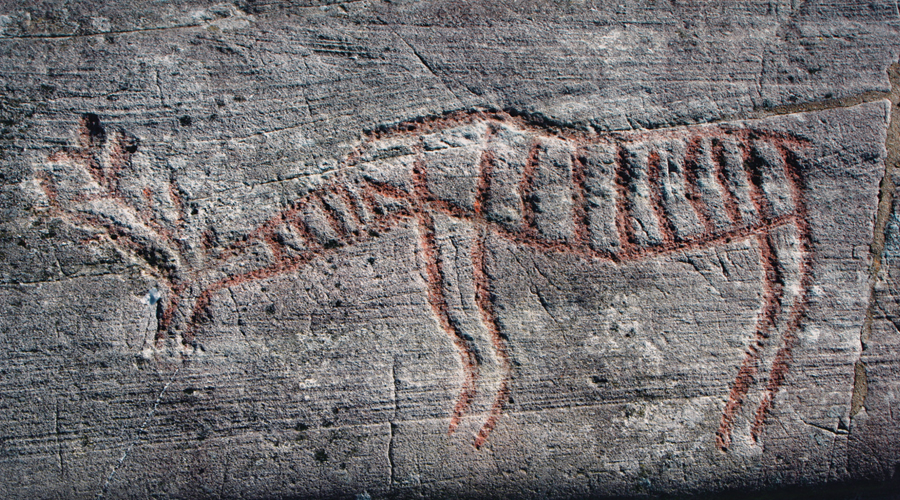
→ Knowing when to back down: The plight of the Vingen rock art site, western Norway
by George Nash
4/03/2024
→ Norway preserves world heritage abroad but not in Norway?
by Bradshaw Foundation
20/02/2024
→ Valuing Cultural Heritage
by Ben Dickiins
20/02/2024
→ Norway's Confusing Messages
by Peter Robinson
20/02/2024
→ Paul Taçon - Griffith University letter regarding the Aksla quarry and Inste Bårdvikneset quay developments in Norway
by Paul Taçon
13/02/2024
→ Norway's Vingen Rock Art Petroglyphs at Risk
by Rock Art Network
13/02/2024
→ Professor Benjamin Smith President, ICOMOS International Scientific Committee on Rock Art calls for an immediate review of the decision to allow a rock quarry and a shipping quay to be built at one of the most significant rock art sites in Europe: Vingen.
by Rock Art Network
8/02/2024
→ Vingen - A Century of Rock Art Research & Cultural Heritage
by Trond Lødøen / Ben Dickins
6/02/2024
→ History of Vingen Rock Art in Norway
by Trond Lødøen
1/01/2018
Friend of the Foundation


→ Knowing when to back down: The plight of the Vingen rock art site, western Norway
by George Nash
4/03/2024
→ Norway preserves world heritage abroad but not in Norway?
by Bradshaw Foundation
20/02/2024
→ Valuing Cultural Heritage
by Ben Dickiins
20/02/2024
→ Norway's Confusing Messages
by Peter Robinson
20/02/2024
→ Paul Taçon - Griffith University letter regarding the Aksla quarry and Inste Bårdvikneset quay developments in Norway
by Paul Taçon
13/02/2024
→ Norway's Vingen Rock Art Petroglyphs at Risk
by Rock Art Network
13/02/2024
→ Professor Benjamin Smith President, ICOMOS International Scientific Committee on Rock Art calls for an immediate review of the decision to allow a rock quarry and a shipping quay to be built at one of the most significant rock art sites in Europe: Vingen.
by Rock Art Network
8/02/2024
→ Vingen - A Century of Rock Art Research & Cultural Heritage
by Trond Lødøen / Ben Dickins
6/02/2024
→ History of Vingen Rock Art in Norway
by Trond Lødøen
1/01/2018
Friend of the Foundation
